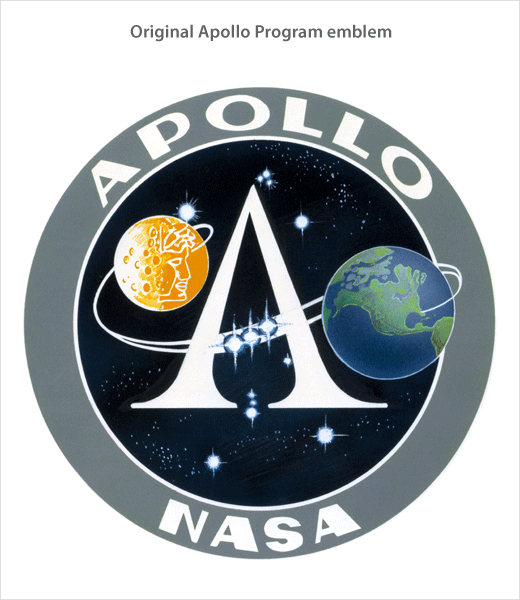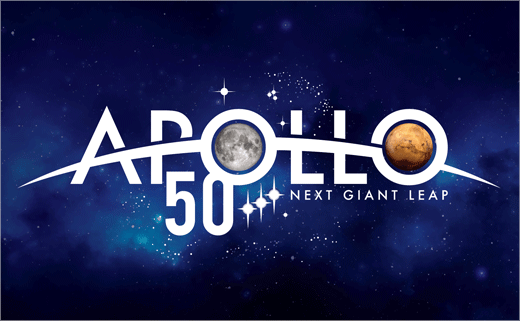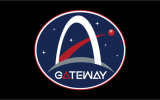NASA Reveals Special Logo to Mark Apollo’s 50th Anniversary
NASA has unveiled a special logo to mark the 50th anniversary of the Apollo Program that landed a dozen Americans on the moon between July 1969 and December 1972.
Created by NASA graphic artist Matthew Skeins, the logo offers a nod to the past with a few elements borrowed from the original Apollo Program emblem, and a glimpse into the future with a graphic depiction of NASA’s vision for the next half-century of space exploration.
“The arc through the word ‘Apollo’ represents Earth’s limb, or horizon, as seen from a spacecraft. It serves as a reminder of how the first views of Earth from the Moon – one of NASA’s crowning achievements – forever transformed the way we see ourselves as human beings,” said a spokesperson for the famous space agency. “It also affirms NASA’s intention to continue pushing the boundaries of knowledge and delivering on the promise of American ingenuity and leadership in space.”
The original Apollo emblem, adopted by the program in 1965, used drawings of the Moon and Earth linked by a double trajectory to portray President John F. Kennedy’s goal of “putting a man on the moon and returning him safely to the earth” by the end of the 1960s.
In a similar fashion, the Apollo 50th anniversary logo describes a contemporary goal, with images of the Moon and Mars filling the first and second “O”s, respectively, and the phrase “Next Giant Leap” beneath the word “Apollo”.
The original emblem, which was a composite design said to have been derived from the ideas of NASA employees and contractor personnel, also featured the constellation Orion. Overlaid on a capital letter “A”, the three stars of Orion’s Belt – Alnitak, Alnilam and Mintaka – formed the bar in the initial for “Apollo”.
And the stars also make a comeback for the 50th anniversary logo, being repositioned diagonally beside the number “50”. They are subsequently set against a blue nebula “as an acknowledgement that human footprints on distant worlds is not too big a dream,” according to NASA.

Source: NASA








